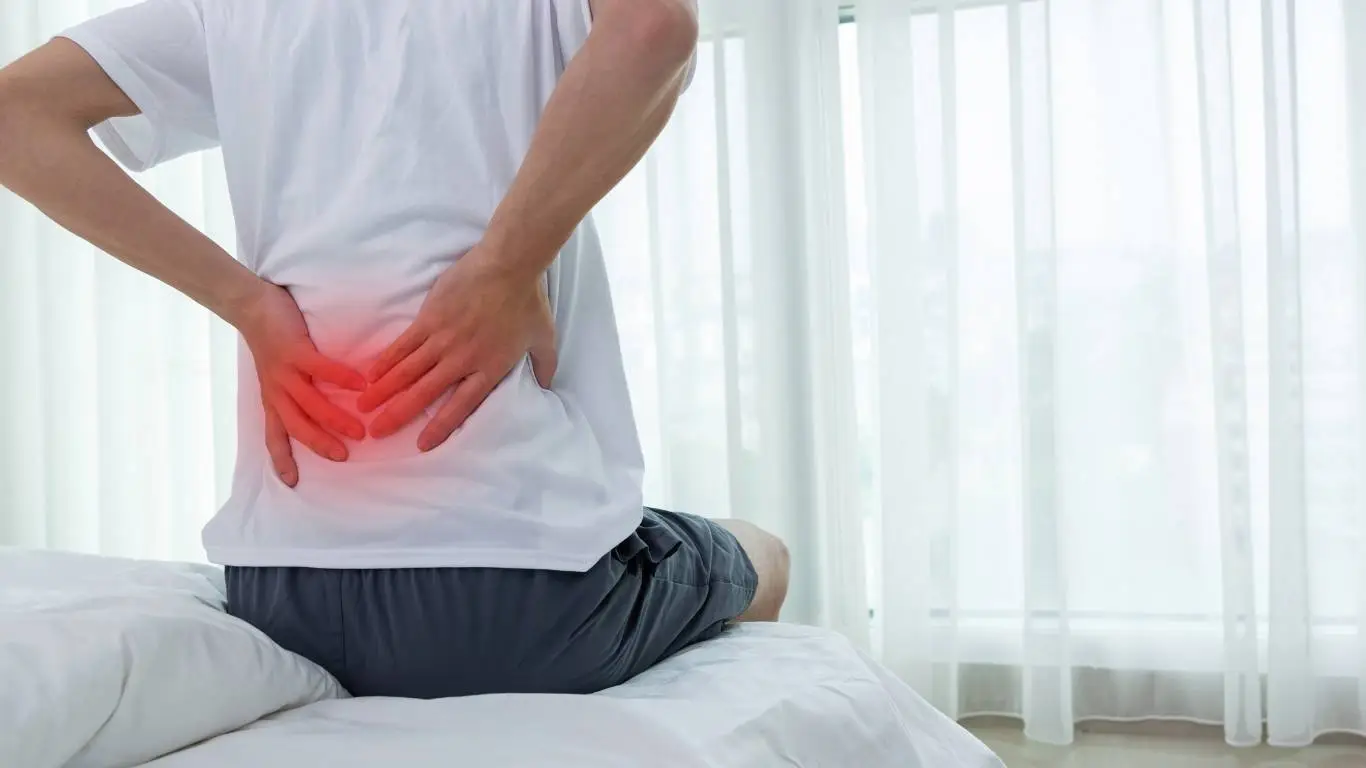Core Engagement Techniques That Protect Your Spine Daily
Lower back aches used to be a constant companion during my daily routine—especially when sitting for too long or lifting groceries wrong. I chalked it up to “just getting older,” until I discovered how core engagement techniques could seriously protect the spine and change the way my back felt. Now, I can’t help but wonder why this isn’t talked about more often. So let’s break down what actually works when it comes to building a resilient spine through mindful movement and daily core habits.
Why Core Engagement Matters for Your Spine

Think of your spine like a suspension bridge—it needs constant support to stay stable. Your core muscles act like the cables holding everything together. When your core isn’t firing properly, your spine ends up taking all the heat. That’s when those little twinges or full-on spasms start showing up.
Understanding the “Core”—It’s More Than Just Abs
People often picture six-pack abs when they hear the word “core,” but that’s just the flashy part. Real core strength includes:
- Transverse abdominis: the deepest layer, which acts like a corset
- Multifidus: tiny muscles along your spine responsible for stability
- Pelvic floor: supports organs and connects to your lower spine
- Diaphragm: yes, even your breathing muscle plays a role
When all these muscles work together, they form a 360-degree belt of protection around your spine. And let me tell you—once you activate this system intentionally, even everyday tasks like vacuuming or lifting a toddler feel less risky.
What Happens Without Core Engagement?
If you’re not engaging your core during movement, your spine is forced to overcompensate. That can lead to:
- Increased disc pressure
- Excessive spinal wear and tear
- Chronic lower back pain
One of the sneaky things I learned is how poor posture quietly throws your core offline. It’s like trying to stabilize a tent with loose ropes—it’s bound to collapse.
Simple Core Activation You Can Do Daily

The Core Engagement Check-In
Here’s a little habit that changed everything for me. Before lifting, reaching, or bending, I ask myself: “Is my core on?” This doesn’t mean bracing like you’re about to be punched—it’s more of a subtle tightening, like zipping up jeans that just came out of the dryer.
- Inhale deeply through your nose
- Exhale and gently draw your belly button toward your spine
- Feel the lower abs, pelvic floor, and obliques lightly contract
It takes 2–3 seconds and drastically reduces strain on your back.
Foundational Exercises That Teach Real Core Engagement
Forget crunches—those can sometimes do more harm than good. Instead, focus on movements that teach your core how to work with your spine, not against it:
- Dead bug: Teaches core control while keeping the spine neutral
- Bird-dog: Great for stabilizing and training balance
- Modified plank holds: Builds endurance in the deep core muscles
- Wall sits with core activation: Teaches how to engage while upright
Adding 10–15 minutes of these movements a few times a week made a noticeable difference in my ability to manage long hours sitting at my desk.
How Core Weakness Leads to Pain—and How to Spot It

Core weakness doesn’t just mean floppy abs—it’s often linked to issues like muscle imbalances, weak glutes, or tight hamstrings. You might notice things like:
- Increased sway in your lower back
- Trouble standing for long periods
- Back pain that flares up with minimal activity
These are all red flags that your body’s “core strategy” needs an upgrade.
The Sitting Trap—And What to Do About It
If you’re like me, long hours in front of a screen probably take a toll. But the real danger isn’t just sitting—it’s sitting without support. Prolonged sitting often shuts off your core and lets your spine slump.
A few fixes:
- Use a lumbar cushion
- Set a timer to stand every 30–45 minutes
- Try a standing desk for part of your day
Trust me, your spine will thank you—and your core will stay more engaged even when you’re not actively exercising.
What Experts and Research Say About Core Engagement

According to the National Institutes of Health, core strengthening is one of the most effective ways to manage and prevent lower back pain. Physical therapists often use these exact techniques as part of standard rehabilitation for spinal injuries. And guess what? Most of them start with teaching patients how to breathe correctly and engage the core gently throughout the day.
Even sports medicine experts at Cleveland Clinic emphasize the connection between spinal support and core control, especially for athletes and active individuals. That’s something I experienced firsthand after tweaking my back during a gym session—the recovery plan wasn’t about rest, it was about learning how to move smarter.
Want to explore more rehab-focused tips and safe movement strategies? This guide dives deeper into physical therapy approaches you can integrate into everyday life.
Also, for a broader understanding of chronic pain conditions tied to spinal structure and function, check out the main back pain pillar article and this comprehensive section on causes of back pain.
Building Core Engagement Into Everyday Life

You don’t need a gym membership or yoga mat to reinforce spine-protecting habits. The real magic happens during everyday tasks. That moment you lean over to tie your shoes, pick up groceries, or even roll out of bed—you’ve got a choice. Engage the core, or let your back take the hit.
For me, it started with brushing my teeth. I’d slouch and lean into the mirror without thinking. Now? Feet shoulder-width apart, slight bend in the knees, core gently activated. No more aching lower back before breakfast.
Core Techniques During Movement
- Walking: Focus on pelvic alignment and a soft brace in your lower belly. Avoid over-arching your lower back.
- Lifting: Use a hip hinge, exhale as you lift, and engage your transverse abdominis before you move.
- Driving: Sit upright with lumbar support. Slightly contract the core during longer drives to stay aligned.
All these micro-adjustments are part of a bigger picture—teaching your body to protect itself automatically.
Common Mistakes When Trying to Engage the Core

Here’s the thing—just “sucking in” your stomach isn’t enough, and it might actually backfire. A few missteps I learned the hard way:
- Over-bracing: Holding your breath or tensing too hard can increase spinal pressure
- Only activating the front: Forgetting the obliques and back extensors weakens the system
- Neglecting breath: Proper core activation needs a functional breathing pattern
My breakthrough came when a physical therapist explained how to sync core activation with the exhale. It felt awkward at first, but once I got it, it was like unlocking a hidden skill. And the tension in my lower back? Gone.
Incorporating Core Work Into Fitness Without Straining the Spine

If you’re working out—or even just stretching at home—there are plenty of ways to integrate core awareness without aggravating your spine. Personally, I shifted from HIIT workouts to more mindful, spine-friendly training, and honestly, my results (and recovery) improved.
Try These Core-Safe Exercises
- Yoga poses like Cat-Cow and Bridge
- Modified Pilates routines that emphasize spinal neutrality
- Dynamic stretches that mobilize hips and activate the deep core
- Core-focused strength training using light resistance and perfect form
And for cardio lovers—walking or swimming with deliberate posture and core awareness can offer low-impact but high-return benefits. According to Mayo Clinic, regular movement that supports posture and core control is often more effective than over-reliance on pain medication or passive therapy.
Sleeping and Sitting: The Underrated Core Training Zones

It’s easy to overlook the 6–8 hours we spend sleeping, or the endless hours on our laptops, but these can make or break your spine health. I realized I was undoing all my workout progress by collapsing into a poor sleep posture and slouching through Zoom calls.
Spine-Supportive Sleeping Tips
- Use a medium-firm mattress with a supportive pillow setup
- Side-sleep with a pillow between the knees to maintain spinal alignment
- Engage your core lightly as you roll out of bed—no sudden movements
Smart Sitting Strategies
- Support your lumbar spine with a rolled towel or a small brace
- Invest in an ergonomic chair that encourages upright posture
- Alternate sitting and standing if you use a standing desk
Mindfulness: The Secret Weapon for Lasting Core-Spine Connection

Engaging your core is as much about awareness as it is about strength. I didn’t really get this until I tried mindfulness-based training. Suddenly, I was catching myself mid-movement, correcting posture, breathing deeper, and feeling more stable from the inside out.
Practices like mindfulness meditation and cognitive behavioral therapy not only help with pain but also retrain your nervous system to support better posture and alignment.
The mind-body link is a big piece of the puzzle. And guess what? You don’t have to sit on a mountain to feel the benefits. Just 5 minutes of stillness with core-focused breath can do wonders.
When to Get Help: Signs Your Core Isn’t Enough

Despite our best efforts, sometimes core engagement alone doesn’t cut it. If you’re dealing with red flags like unexplained weight loss, tingling, or numbness, it’s time to get a professional evaluation. Tools like MRI scans or nerve studies may be necessary.
For more on diagnosing specific back issues and navigating the next steps, take a look at our symptoms and diagnosis guide. And for a broader understanding of how to integrate healing with everyday life, don’t miss the comprehensive lifestyle and natural remedies section.

Camellia Wulansari is a dedicated Medical Assistant at a local clinic and a passionate health writer at Healthusias.com. With years of hands-on experience in patient care and a deep interest in preventive medicine, she bridges the gap between clinical knowledge and accessible health information. Camellia specializes in writing about digestive health, chronic conditions like GERD and hypertension, respiratory issues, and autoimmune diseases, aiming to empower readers with practical, easy-to-understand insights. When she’s not assisting patients or writing, you’ll find her enjoying quiet mornings with coffee and a medical journal in hand—or jamming to her favorite metal band, Lamb of God.






